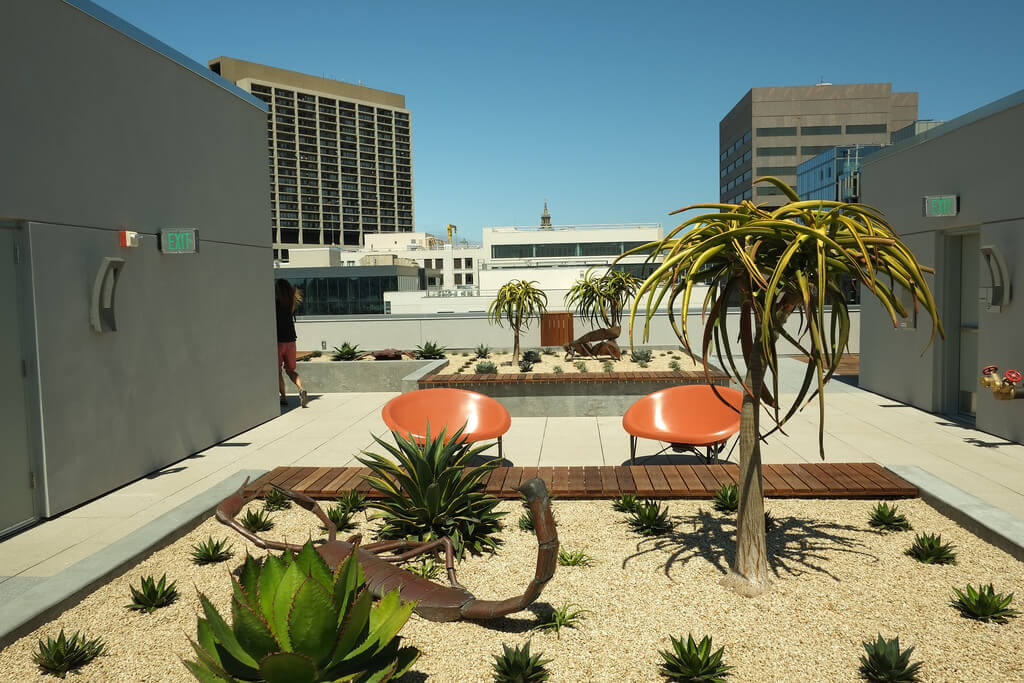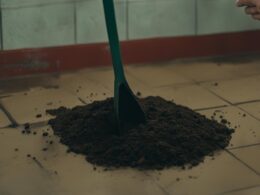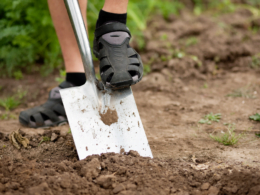Xeriscaping refers to a tactic used in gardening with the purpose of conserving water with the help of a creative landscape. The word comes from Greek, from xeros, which means “dry”, and scape, which designates a view or a scene. But what is the goal of xeriscaping? Basically, it refers to landscaping by relying on slow-growing plants that are tolerant of drought. In this way, people manage to conserve water and to set a landscape that is water-efficient.
Briefly, xeriscaping consists in smartly choosing the right plants and the right irrigation system. The balance between aesthetics and resource requirements is not easily achieved. However, the results can be quite satisfying, especially if you design your garden on your own.

Benefits of Xeriscaping
You may be asking yourself why would someone want to choose this type of gardening. Let’s see some of the benefits of planting with care for resources:
1. Saving Water
In most parts of North America, more than 50% of residential water resources are used for lawns and landscapes. If you xeriscape, you can cut down on the landscape water by an astounding 50 or even 75%. This translates to some savings for your bills, but also to a special care given to the environment. Not to mention the importance it has in areas severely affected by drought, where people who love gardening must adapt.
2. Minimal Maintenance
In general, this type of gardening requires very little maintenance. You still have to do the pruning and weeding occasionally, but other than that, you don’t have to stress too much about it. A simple irrigation system can also solve the issue of watering so that you don’t have to worry about that either. In fact, many people choose to take up xeriscaping precisely because it’s a simple way of gardening.
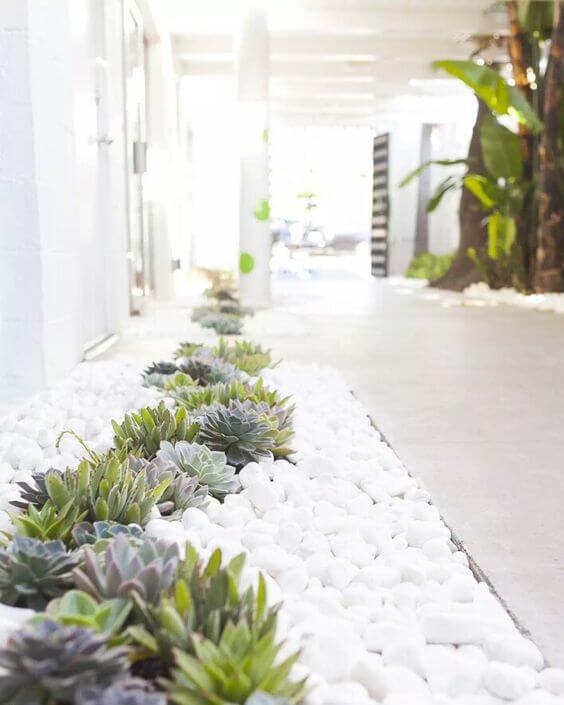
3. All Natural
There is a priceless benefit that comes with using plants that are native to the area you live in: you don’t need to add any other chemical supplements. As long as you have a healthy organic soil, the plants will receive all the nutrients they need. Needless to say, this saves you lots of time, money and effort, plus you’ll have a healthy garden.
4. No Pollution
One of the key elements for a xeriscape is caring for the environment. This also includes reducing pollution as much as possible. Gas mowers consume a lot of fossil fuel, which can be cut down or eliminated with the turf areas. You can maintain small turf areas with the help of a reel mower.
5. Wildlife Habitat
Using native plants, as mentioned above, together with shrubs and trees, are a great habitat. Local wildlife will grow happily within a familiar and varied habitat, so you can yet again help support the environment and nature around you.

Principles of Xeriscaping
1. Water Usage
As previously mentioned, the key principle in xeriscaping is water usage. Though there are certain indications regarding this, it is a constant struggle for landscape designers worldwide to cut down on water use. A good approach for this type of gardening is to inform yourself. Before starting a plan, you should visit your local nurseries. See what plants that are resistant to drought are available locally and which ones you could use. Also, keep in mind the annual precipitation levels for your area.
Besides, analyze the land you have. Check out the sunny and shady areas so that you can see what area needs more water. It’s an excellent idea to group plants according to their watering needs. Next, look at the natural shapes of the land and the drainage patterns. You can take advantage of them and develop terraces. Position shrubs and trees so as to offer natural heating/cooling sources for the buildings found nearby.
2. Improving the Soil
A water-conserving landscape usually relies on a special soil. The soil here must fulfill two functions: to drain quickly and to store water. You can obtain that by putting more organic material in the soil. At the same time, keep it well aerated. Ideally, you should use compost as an organic additive, except if you have lots of cacti and succulents. For the latter, you should use lean soil.
If you’re not sure, you can test your soil at a special garden center or buy a home test kit. In general, most Western soils have a high pH, being alkaline, with a low content of phosphorus. In this case, you should add rock phosphate and bone meal.
3. Limiting Turf Areas
The goal here is to cut down on the size of turf areas as much as you can. You will still need some turf for visual reasons and open space though. If you want to plant some new turf or to reseed the lawn you already have, it’s better to ask at the garden center for a species that saves water.
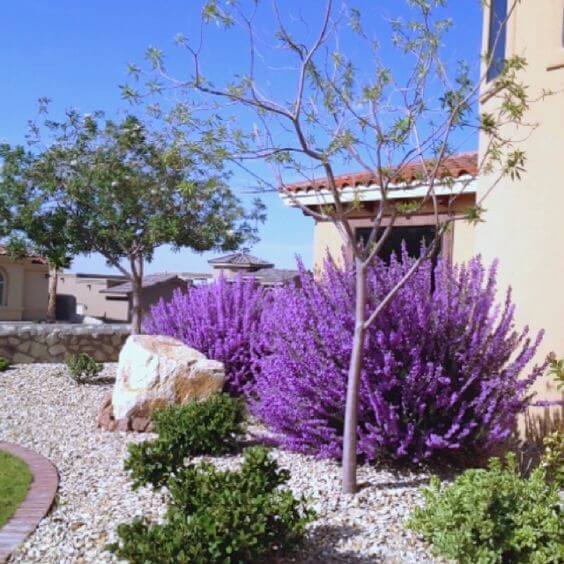
4. Using the Right Plants
As already mentioned, the best results are ensured by the plants that grow natively in the area. Xeriscaping relies on drought-resistant plants in general. You can recognize them by their looks: small, glossy, thick, fuzzy or silver-gray. When choosing a plant, think about the final size it will have. Thus, you can cut down on the pruning maintenance effort. Remember to combine plants that have similar watering needs!
5. Mulch
The soil around the plants should be covered with a mulch. You can choose between gravel, leaves, pine needles, wood chips, bark or coarse compost. This helps the soil retain its moisture and temperature. Moreover, it prevents erosion and it can keep competing weeds away. The mulch will be slowly incorporated into the soil, so from the time to time, you need to re-apply it in a thick layer. Don’t let any bare areas around!
6. Irrigation
Overwatering is a thing to avoid in xeriscaping. The best thing for supplying water to your plants is to use a soaker hose or a drip irrigation system. They help save water by bringing it straight to the base of the plant, so it doesn’t evaporate. It also cuts down on pooling and erosion. Water deeply and rarely!
A good idea is to go for rainwater harvesting. Collect the winter rainfall into barrels or tanks that you place underground. Then, you can connect them to the drip irrigation system you have, so that you can have a free and easy to use yearly source of water. If you do some research, you will surely find the rainwater harvesting option adequate to your budget.
7. Keep Out Weeds
It may require some effort to keep the weeds at bay, but it’s worth it. A thick layer of mulch helps with that, and so do tall turf areas.

Plant Options
If you’re a beginner with this, it may be a challenge to pick the right xeriscaping plants for your garden. Here you have a brief list of plants you can choose for this type of gardening:
- Trees: Gingko Biloba, Shagbark hickory, red maples, American elms, hawthorns, thornless honey locusts, sumacs, crape myrtles, leyland cypresses, Mugo pines;
- Shrubs: Russian sage, butterfly bush, Blue Star juniper, lantana, barberry, Virginia sweetspire, heavenly bamboo, bayberry, cotoneaster, burning bush, privet, blue mist shrub (or “bluebeard”), bougainvillea, red bird of paradise (Caesalpinia pulcherrima), winter Jasmine;
- Ground covers: Angelina sedum (or “stonecrop”), yellow alyssum, ice plant, candytuft, Vinca minor, bugleweed (or “Ajuga”), Chinese lantern.
Of course, this is not an exhaustive list of the plants you can use. The best thing to do is to ask around or notice the plants that grow in your area. You can even ask some other xeriscapers for advice or simply take note of what they chose to use.
Xeriscaping Design Ideas
Upon hearing about a water-saving garden design, many people think that the aesthetic part is overlooked. However, this is not true, since there are lots of drought-resistant plants that have very beautiful colors. If you briefly check out the list of suggested plants for this type of gardening, you will see that they are very pleasing to the eye.
The best part about it is that it allows you to play around with various textures and materials. You can do some research and find some interesting paver patterns. These would allow you to take advantage of some open earth areas found between pavers. In turn, this would allow rain to enter the soil, which is great for the entire concept of the garden.
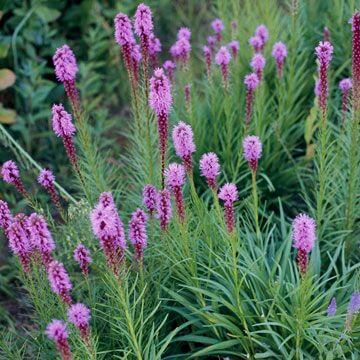
A good idea for design is to replace concrete or macadam with gravel. Not only it will make the entire space look differently, but it will also help with using the water. Besides gravel, you can opt for turf stone or porous paving. These will let grass grow through them, so you can take advantage of it.
Many people choose to go for a rectangular design with their xeriscape. You can try that too if you like to have an angular look. However, soft colors (such as mauves or pinks) can soften the lines. For a touch of elegance, you can also include pebble floors or natural stones placed around the garden. Another option is to create a circular look. Depending on the way in which the soil is arranged, you can create circles that can lead water where the plants need it. You can even plant a tree in the middle and add a small circle lawn around it. Even though lawn is very water-hungry, some people choose not to quit it, since it’s great for kids or pets.
Conclusion
Some people may argue that xeriscaping requires much more thinking and planning than a regular garden. It is indeed so, but the result is amazing if you think about the smart use of the resources you have available. Moreover, the impact it has on the environment makes it worth it. But perhaps the best advantage it offers is that it lets people reconnect with nature and observe the natural cycles of growing and development.
Image source: 1





